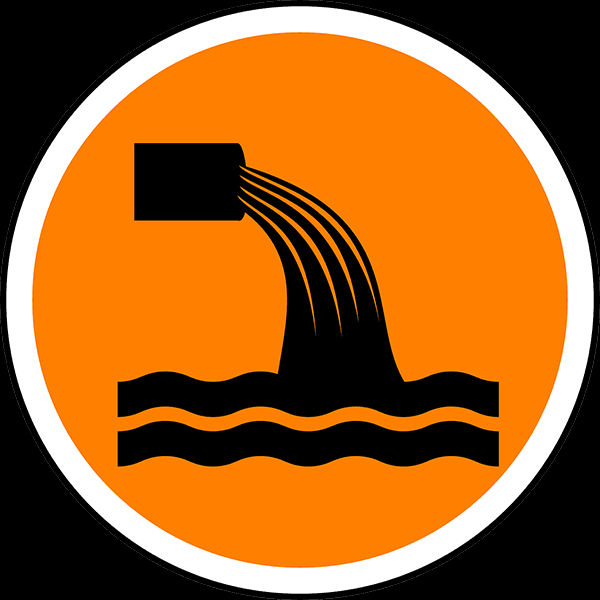The 4-Minute Rule for Reclaim Waste
The 4-Minute Rule for Reclaim Waste
Blog Article
Not known Factual Statements About Reclaim Waste
Table of ContentsRumored Buzz on Reclaim WasteUnknown Facts About Reclaim WasteReclaim Waste for DummiesAn Unbiased View of Reclaim WasteThe Ultimate Guide To Reclaim Waste
Explore the kinds, events, and forms of liquid waste. Residential sewage waste refers to the waste and products from a household septic system. This type of waste is produced by humans in residences, colleges, and other structures. This only includes sewage-disposal tanks that have a drainpipe area. The proper administration and disposal of domestic sewage waste need fluid waste to be moved to a sewage therapy plant where the correct methods and devices are related to detoxify and get rid of waste.
Business waste frequently consists of potential dangers, such as combustible products or a mix of fluid and solid waste products, and needs a much more sophisticated and comprehensive disposal process. The disposal of commercial waste usually entails the filtering of waste prior to transport to ensure secure and appropriate disposal. Industrial waste is produced from results and runoff of industrial processes and manufacturing.
This type of waste can not use the very same sewage management transport or procedures as septic or business liquids. The hazardous waste monitoring process requires the evaluation and testing of liquid waste prior to it goes through the disposal process (liquid waste removal). Overflow waste is the fluid waste that originates from drainage and excess stormwater in very inhabited locations or cities
Overflow waste can trigger contamination and flooding otherwise dealt with effectively. Find out more about sewage system cleansing and waste monitoring. Guaranteeing correct waste management can stop disasters and lower ecological injury. Both people in residential settings and specialists in industrial or production industries can take advantage of comprehending the procedures and laws of fluid waste management.
Our Reclaim Waste Diaries
Contact PROS Solutions today to learn concerning our waste administration and disposal services and the proper means to take care of the fluid waste you produce.
(https://ameblo.jp/reclaimwaste1/entry-12874802223.html)This supposed 'wastewater' is not just an essential resource but, after treatment, will certainly be released to our land, rivers or the sea. Made use of water from bathrooms, showers, bathrooms, kitchen sinks, laundries and commercial procedures is understood as wastewater.

water made use of to cool equipment or tidy plant and equipment). Stormwater, a kind of wastewater, is drainage that streams from farming and urban areas such as roof coverings, parks, yards, roadways, courses and seamless gutters into stormwater drains, after rainfall. Stormwater moves without treatment straight to local creeks or rivers, at some point getting to the sea.
Getting My Reclaim Waste To Work
In Queensland, many wastewater is treated at sewage treatment plants. Wastewater is carried from residential or commercial sites through a system of sewers and pump stations, recognized as sewage reticulation, to a sewage therapy plant.
The Department of Natural Resources encourages local federal governments regarding handling, operating and maintaining sewerage systems and therapy plants. In unsewered locations, city governments may need householders to install specific or house sewer treatment systems to treat residential wastewater from commodes, cooking areas, shower rooms and washings. The Department of Natural Resources authorizes the use of household systems when they are proven to be effective.
A lot of stormwater receives no therapy. In some brand-new class, therapy of some stormwater to eliminate litter, sand try this site and crushed rock has actually begun making use of gross pollutant catches. Wastewater therapy happens in four stages: Gets rid of solid issue. Larger solids, such as plastics and other things wrongly discharged to sewers, are eliminated when wastewater is gone through displays.
Wastewater after that moves right into large storage tanks where solids settle and are eliminated as sludge. Grease and scum are skimmed from the surface area. Uses little living organisms understands as micro-organisms to damage down and remove continuing to be dissolved wastes and fine fragments. Micro-organisms and wastes are incorporated in the sludge. Eliminates nitrogen and phosphorus nutrients that can cause algal flowers in our rivers and threaten aquatic life.
The Only Guide for Reclaim Waste
Nutrient removal is not available at all sewage therapy plants because it calls for pricey specialised equipment. Clear fluid effluent generated after treatment may still include disease-causing micro-organisms - liquid waste removal.

Most wastewater moves into the sewage system. Under the Act, neighborhood governments provide approvals and licences for ecologically appropriate tasks (ERAs) including wastewater releases that may have a neighborhood impact.
The 45-Second Trick For Reclaim Waste
Monitoring provides factual details concerning water high quality and can verify that licence conditions are being satisfied. The details gotten with surveillance provides the basis for making water quality choices.
Report this page